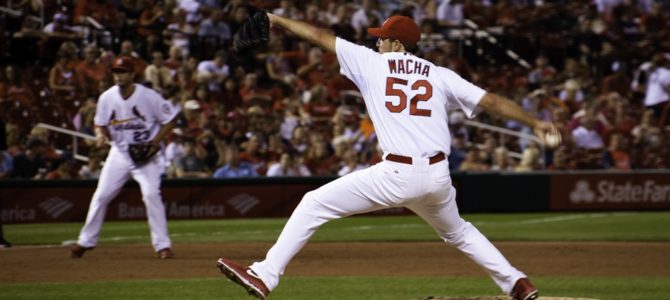
As Major League Baseball begins its first full week of spring training, the game faces two sources of controversy. The first stems from the Houston Astros’ sign-stealing scandal, which cost the team’s manager and general manager their jobs, put an asterisk (metaphorical if not literal) behind the team’s 2017 World Series victory, and dominated discussions throughout most of the off-season.
The second potential source of controversy received less attention in the short term, but may have the bigger effect over the long term. As spring training began, MLB announced a major rule change for the 2020 season: Every pitcher must face a minimum of three batters, or pitch until the end of an inning. (Umpires can make exceptions to the rule if pitchers get injured, and need to come out of the game sooner.)
The rule will have a major effect on strategy, and the construction of teams’ rosters. But it seems unlikely to achieve its ultimate objective: Speeding up games that have become interminably long for younger fans.
Changes to In-Game Strategy
Announcement of the rule led to numerous articles analyzing how the three-batter edict will affect particular teams. At this point, conventional wisdom suggests the rule will have its greatest effect on left-handed relief specialists. Because the rule has yet to take effect in a major league game, analysts can only speculate as to its impact, but some believe it could make the left-handed one-out-guy (with the colorful acronym LOOGY) a scarce phenomenon in baseball.
In theory, a manager can still bring in a left-handed specialist in certain scenarios. For instance, if a left-handed hitter comes to the plate with two outs in an inning, a manager can bring his left-handed pitcher to face that hitter. (Left-handed hitters traditionally perform much worse against left-handed pitchers.) If the pitcher gets the hitter out, the manager can immediately replace the lefty pitcher, because the pitcher ended the inning—just as he could under the old rules package.
But managers will now have to think twice about making those types of moves, knowing that, if the left-handed pitcher in question does not get the hitter in question out, the pitcher will have to face additional batters. By giving the manager less ability to control matchup scenarios, it takes some of the strategy out of the game—for little good purpose.
Plodding Pace of Play
While MLB announced the rule change as part of a series of efforts to speed the pace of play, it seems unlikely to achieve its core objective. Assuming the three-batter rule applies once in every game—likely an overestimate, given one analysis saying it applied only 4 percent of the time last season—eliminating one pitching change because of the rule would reduce the length of the average major league game by only a couple of minutes.
But in 2019, the average major league game took 3 hours and 10 minutes—the longest time-of-game in baseball history. (The longest games in baseball history seem to be affecting fans, as MLB saw its lowest overall and per-game attendance last year since 2003.) Even as baseball tries to speed up the pace of play, game times creep ever higher, rising from a flat three hours in 2015, 2 hours and 49 minutes in 2005, and a brisk 2 hours and 29 minutes in 1975.
With baseball games roughly 40 minutes longer than those half a century ago, the three-batter rule won’t achieve anything like a meaningful reduction in game length, but it will have a harmful impact on strategic decisions at key moments in key games. Ironically enough, if the three-batter rule results in more offense—because a manager can’t match his ideal pitcher against each batter—the rule could actually result in longer games, because teams will obtain more hits and score more runs.
Baseball does need to pick up its pace of play, but those efforts should involve the seemingly limitless rituals undertaken between pitches: The hitter stepping out of the batter’s box, the pitcher stepping off the rubber, the hitter adjusting and re-adjusting his gloves and helmet, the hitter adjusting and re-adjusting himself, and on and on. Putting a clock on pitchers and on hitters between pitches won’t change the strategic fundamentals of the game, but it would speed the game up significantly.
If MLB Commissioner Rob Manfred really wants to speed up the game, he should go with a pitch clock instead. Baseball should nix the three-batter rule, which seems likely to do more harm than good.









